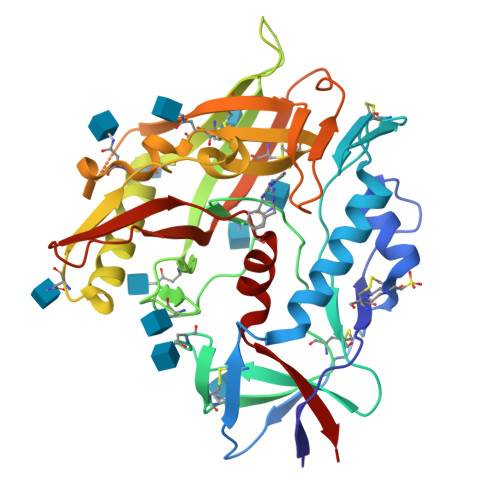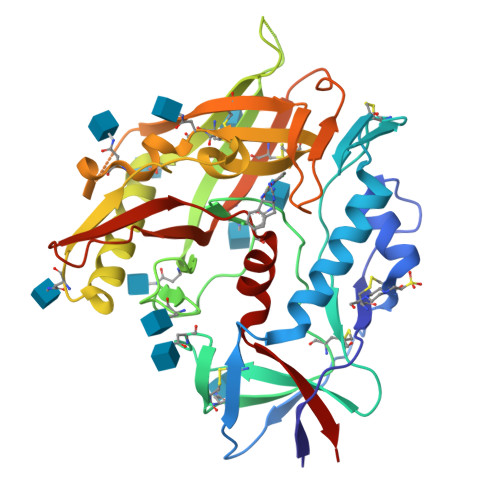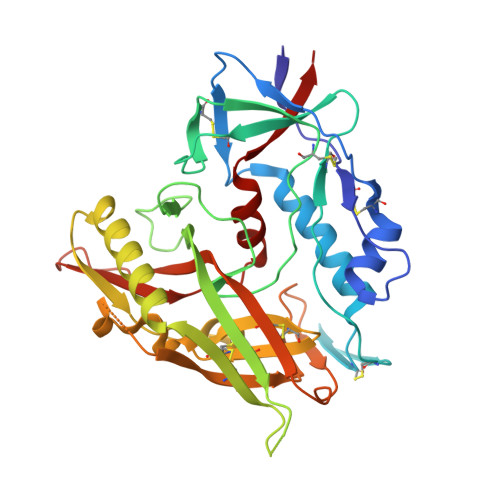Structure-Based Design, Synthesis, and Characterization of Dual Hotspot Small-Molecule HIV-1 Entry Inhibitors.
Lalonde, J.M., Kwon, Y.D., Jones, D.M., Sun, A.W., Courter, J.R., Soeta, T., Kobayashi, T., Princiotto, A.M., Wu, X., Schon, A., Freire, E., Kwong, P.D., Mascola, J.R., Sodroski, J., Madani, N., Smith, A.B.(2012) J Med Chem 55: 4382-4396
- PubMed: 22497421
- DOI: https://doi.org/10.1021/jm300265j
- Primary Citation of Related Structures:
4DKO, 4DKP, 4DKQ, 4DKR - PubMed Abstract:
Cellular infection by HIV-1 is initiated with a binding event between the viral envelope glycoprotein gp120 and the cellular receptor protein CD4. The CD4-gp120 interface is dominated by two hotspots: a hydrophobic gp120 cavity capped by Phe43(CD4) and an electrostatic interaction between residues Arg59(CD4) and Asp368(gp120). The CD4 mimetic small-molecule NBD-556 (1) binds within the gp120 cavity; however, 1 and related congeners demonstrate limited viral neutralization breadth. Herein, we report the design, synthesis, characterization, and X-ray structures of gp120 in complex with small molecules that simultaneously engage both binding hotspots. The compounds specifically inhibit viral infection of 42 tier 2 clades B and C viruses and are shown to be antagonists of entry into CD4-negative cells. Dual hotspot design thus provides both a means to enhance neutralization potency of HIV-1 entry inhibitors and a novel structural paradigm for inhibiting the CD4-gp120 protein-protein interaction.
Organizational Affiliation:
Department of Chemistry, Bryn Mawr College, Bryn Mawr, Pennsylvania 19010, USA. jlalonde@brynmawr.edu





















